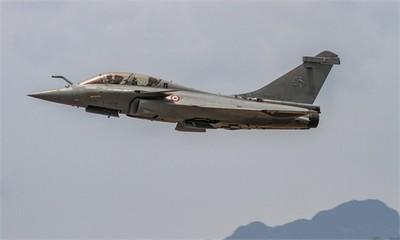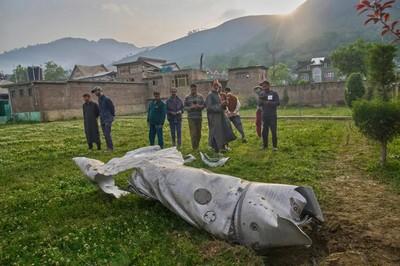
Who should be blamed for Rafale jets’ poor sales?
Global Times
The Associated Press recently cited anonymous sources from the French military claiming that, following the India-Pakistan conflict in May, China “led a charge” to “spread doubts” about French-made Rafale jets and launched a large-scale “disinformation campaign” aimed at undermining the reputation and sales of this “France’s flagship fighter.” Some French media outlets quickly followed up with reports based on this vague and “unsubstantiated revelation,” piecing together a narrative that “Beijing seeks to undermine France’s industrial and strategic rise in the Indo-Pacific.” This reveals a deep-rooted habit among certain Western circles.

However, this so-called revelation is riddled with logical flaws and contradictions. For example, it claims that the Rafale jet became a target after the India-Pakistan conflict precisely because of its outstanding performance and strong export record – in other words, “we’re being attacked because we’re excellent.” But one can’t help but wonder: What exactly about the Rafale’s performance during the May conflict was so enviable? Unsurprisingly, this narrative backfired on platforms like X, failing not only to gain support but also triggering widespread mockery from netizens. One British user remarked that “when you have shoddy tech all you can rely on is propaganda to sell your wares.” A French user added “that’s a lot of whining,” and the French military should focus on doing what it is supposed to do.
In May, a photo allegedly showing a damaged Rafale fighter jet from the India-Pakistan air conflict garnered global attention. China has never commented on this issue; instead, it has called both India and Pakistan to maintain calm and restraint. It is well known that the Rafale represents the pinnacle of French defense technology and serves as an important symbol of France’s presence on the global military stage. Therefore, it’s understandable that the French military is highly sensitive about the Rafale’s international reputation. If the French military truly feels that the Rafale is facing a “sales crisis,” it might need to review the jet’s own performance. After all, in the arms market, no one can boost their sales simply by “badmouthing” others.
From a communications perspective, the narrative of the Rafale being “smeared” inevitably brings to mind recent reports about France’s defense industry in overseas markets. For example, the Peruvian government confirmed that it has decided to buy 24 JAS 39 Gripen E/F fighter jets from Sweden for $3.5 billion instead of F-16s from the US or Rafale from France. Thailand’s air force has also recently confirmed its plan to buy Swedish Gripen E/F fighters.
In today’s multipolar and diverse world, the international military equipment market is no longer an exclusive domain monopolized by just a few countries. Framing Chinese and French fighter jets in an “either-or” rivalry only exposes the persistent zero-sum mentality of some Westerners.
In fact, whether the Rafale sells or not has nothing to do with China, and the Chinese society doesn’t care about it. Tying the gains and losses of the Rafale in specific markets rigidly to China is merely self-dramatization; it is not only an evasion of reality and self-challenges but also a recurring issue of “shifting the blame to China” when faced with problems. Some Westerners’ complaints and accusations against China may very well reflect something that they often do: launching large-scale smear campaigns against Chinese-made products to “contain China’s rise” and “attempting to undermine its credibility and technological base.” Furthermore, this revelation “just happens” to appear during high-level exchanges between China and Europe, raising suspicions about whether someone is deliberately trying to create noise to cause disruption.
For decades, the Chinese government has maintained a cautious and responsible attitude toward military exports, strictly following the three principles of arms exports: conducive to the legitimate self-defense capability of the recipient country; not undermining peace, security and stability of the region concerned and the world as a whole; non-interference in the internal affairs of the recipient country. This stands in stark contrast to the practices of some Western countries that, in order to “open up weapon sales,” are even willing to fan the flames and exacerbate tensions in conflict areas. These facts are evident to all. Rather than indulging in the zero-sum logic of “the rise of others must be detrimental to me,” some in the West would be better off taking a step back and rationally acknowledging the legitimate progress of emerging countries in the field of military technology, and seriously responding to the international community’s calls for peace and tranquility.
The continuous development of China’s military power is a natural reflection of its rising comprehensive national strength, which is entirely aimed at safeguarding national sovereignty, security, and developmental interests, and it has never been about competing with anyone. At the Paris Air Show in June, the appearance of the Chinese J-10CE fighter jet alongside France’s Rafale fighter jet sparked intense discussion. Let’s see what the spokesperson from the Aviation Industry Corporation of China said: Both aircraft are advanced fighters on the world stage, and hopefully all cutting-edge fighter jets from different countries could contribute to safeguarding global peace.
